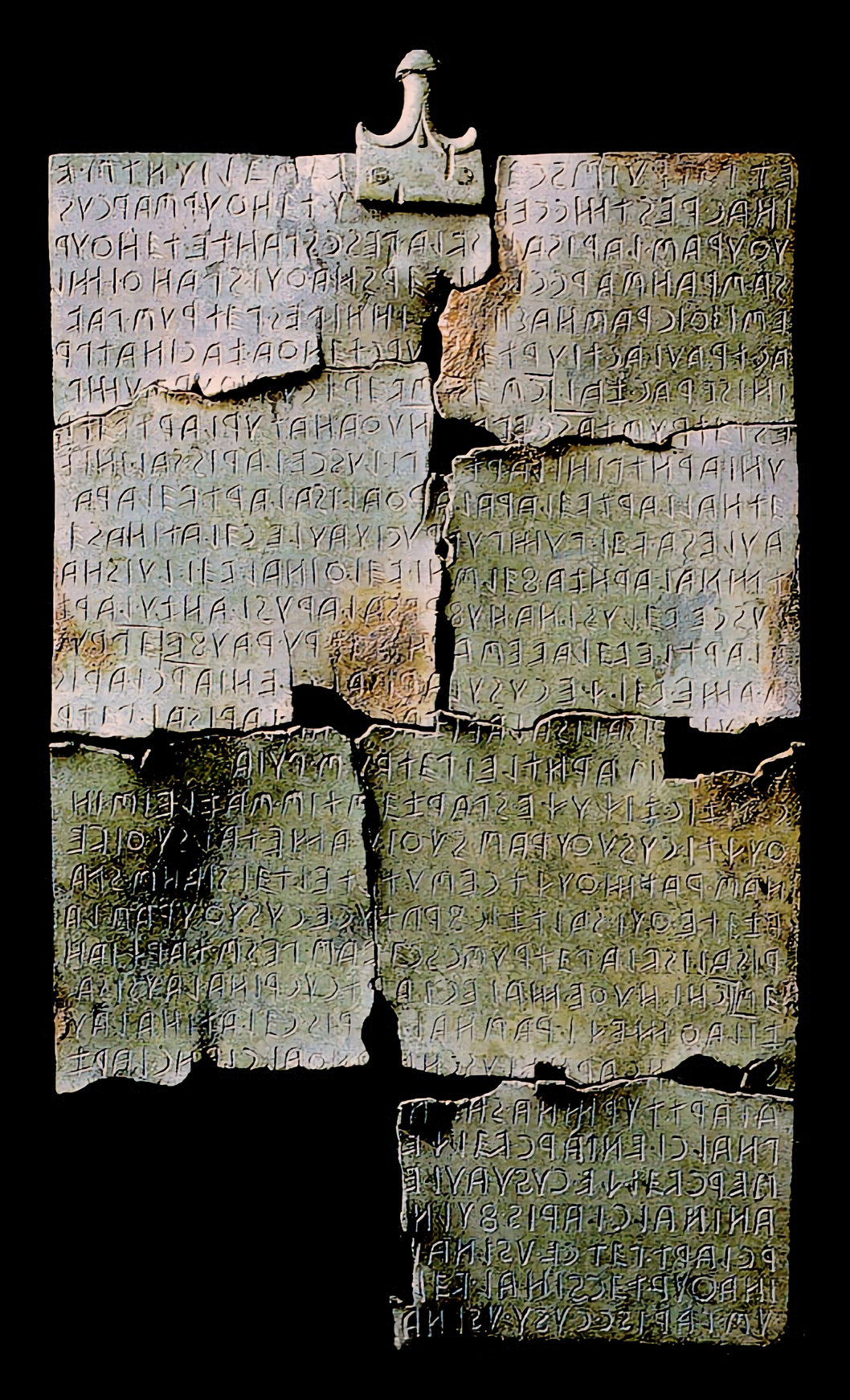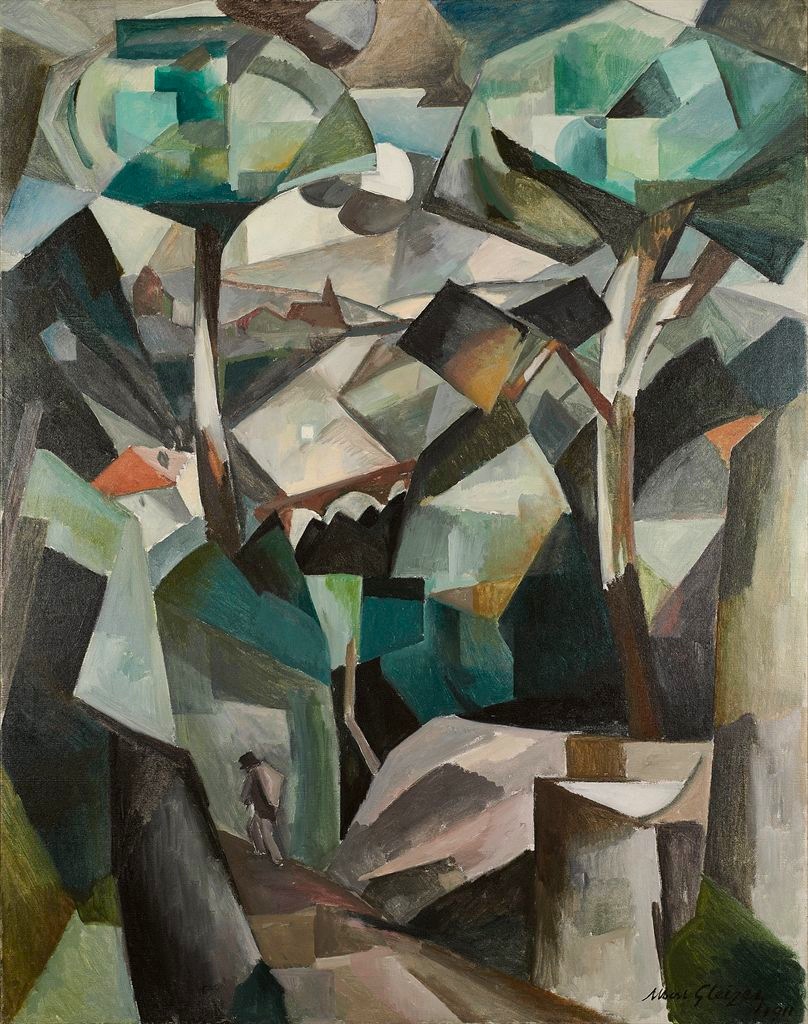|
Gino Severini
Gino Severini (7 April 1883 – 26 February 1966) was an Italian Painting, painter and a leading member of the Futurism (art), Futurist movement. For much of his life he divided his time between Paris and Rome. He was associated with neo-classicism and the "return to order" in the decade after the First World War. During his career he worked in a variety of media, including mosaic and fresco. He showed his work at major exhibitions, including the Rome Quadrennial, and won art prizes from major institutions. Early life Severini was born into a poor family in Cortona, Italy. His father was a junior court official and his mother a dressmaker. He studied at the Scuola Tecnica in Cortona until the age of fifteen, when he and a group of fellow-classmates were expelled from the entire Italian school system for the attempted theft of exam papers. The boys escaped a custodial sentence but Severini never again attended formal education. For a while he worked with his father; then in 1899 ... [...More Info...] [...Related Items...] OR: [Wikipedia] [Google] [Baidu] |
Cortona
Cortona (, ) is a town and ''comune'' in the province of Arezzo, in Tuscany, Italy. It is the main cultural and artistic centre of the Val di Chiana after Arezzo. Toponymy Cortona is derived from Latin Cortōna, and from Etruscan 𐌂𐌖𐌓𐌕𐌖𐌍 (curtun). This may be related to Indo-European *ghortos meaning "enclosed place" and consequently walled city like Latin hortus, German Garten, Italian orto, English yard, and Slavic grad. The name may also be linked to the Phrygian town of Gordium in Anatolia, although the founding myth for the latter is that it was named after founder, King Gordias. However, the Etruscan language is probably a pre-Indo-European language, and therefore if it was named by the Etruscans, an Indo-European etymology is uncertain. The Umbrian language, by contrast, is an Italic language, so if it was named by them, a link to Indo-European roots would be more likely. George Dennis suggests that it was known by many names "Corytus, Croton, Crotona ... [...More Info...] [...Related Items...] OR: [Wikipedia] [Google] [Baidu] |
Gino Severini, 1911, Souvenirs De Voyage, Oil On Canvas, 47 X 75 Cm, Private Collection
{{dab ...
Gino may refer to: * Gino (given name) * Gino (surname) * ''Gino'' (film), a 1993 Australian film * ''Gino the Chicken'', Italian TV series See also * *Geno (other) *Gino's (other), various restaurants and fast-food chains *Gina (other) Gina or GINA or ''variation'' may refer to: Gina Gina may refer to: * Gina (given name), multiple individuals * Gina (Canaan), a town in ancient Canaan * Arihant (Jainism), also called gina, a term for a human who has conquered his or her inner p ... [...More Info...] [...Related Items...] OR: [Wikipedia] [Google] [Baidu] |
Juan Gris
José Victoriano González-Pérez (23 March 1887 – 11 May 1927), better known as Juan Gris (; ), was a Spanish painter born in Madrid who lived and worked in France for most of his active period. Closely connected to the innovative artistic genre Cubism, his works are among the movement's most distinctive. Life Gris was born in Madrid and later studied engineering at the Madrid School of Arts and Sciences. There, from 1902 to 1904, he contributed drawings to local periodicals. From 1904 to 1905, he studied painting with the academic artist José Moreno Carbonero. It was in 1905 that José Victoriano González adopted the more distinctive name Juan Gris. In 1909, Lucie Belin (1891–1942)—Gris' wife—gave birth to Georges Gonzalez-Gris (1909–2003), the artist's only child. The three lived at the Bateau-Lavoir, 13 Rue Ravignan, Paris, from 1909 to 1911. In 1912 Gris met Charlotte Augusta Fernande Herpin (1894–1983), also known as Josette. Late 1913 or early 1914 they live ... [...More Info...] [...Related Items...] OR: [Wikipedia] [Google] [Baidu] |
Albert Gleizes
Albert Gleizes (; 8 December 1881 – 23 June 1953) was a French artist, theoretician, philosopher, a self-proclaimed founder of Cubism and an influence on the School of Paris. Albert Gleizes and Jean Metzinger wrote the first major treatise on Cubism, ''Du "Cubisme"'', 1912. Gleizes was a founding member of the Section d'Or group of artists. He was also a member of ''Der Sturm'', and his many theoretical writings were originally most appreciated in Germany, where especially at the Bauhaus his ideas were given thoughtful consideration. Gleizes spent four crucial years in New York, and played an important role in making America aware of modern art. He was a member of the Society of Independent Artists, founder of the Ernest-Renan Association, and both a founder and participant in the Abbaye de Créteil. Gleizes exhibited regularly at Léonce Rosenberg's ''Galerie de l’Effort Moderne'' in Paris; he was also a founder, organizer and director of Abstraction-Création. From the mid-1 ... [...More Info...] [...Related Items...] OR: [Wikipedia] [Google] [Baidu] |
Jean Metzinger
Jean Dominique Antony Metzinger (; 24 June 1883 – 3 November 1956) was a major 20th-century French painter, theorist, writer, critic and poet, who along with Albert Gleizes wrote the first theoretical work on Cubism. His earliest works, from 1900 to 1904, were influenced by the neo-Impressionism of Georges Seurat and Henri-Edmond Cross. Between 1904 and 1907 Metzinger worked in the Divisionist and Fauvist styles with a strong Paul Cézanne, Cézannian component, leading to some of the first Proto-Cubism, proto-Cubist works. From 1908 Metzinger experimented with the faceting of form, a style that would soon become known as Cubism. His early involvement in Cubism saw him both as an influential artist and an important theorist of the movement. The idea of moving around an object in order to see it from different view-points is treated, for the first time, in Metzinger's ''Note sur la Peinture'', published in 1910.Jean Metzinger, October–November 1910, "Note sur la peinture" Pan: ... [...More Info...] [...Related Items...] OR: [Wikipedia] [Google] [Baidu] |
Avant-garde
The avant-garde (; In 'advance guard' or ' vanguard', literally 'fore-guard') is a person or work that is experimental, radical, or unorthodox with respect to art, culture, or society.John Picchione, The New Avant-garde in Italy: Theoretical Debate and Poetic Practices' (Toronto: University of Toronto Press, 2004), p. 64 . It is frequently characterized by aesthetic innovation and initial unacceptability.Kostelanetz, Richard, ''A Dictionary of the Avant-Gardes'', Routledge, May 13, 2013 The avant-garde pushes the boundaries of what is accepted as the norm or the '' [...More Info...] [...Related Items...] OR: [Wikipedia] [Google] [Baidu] |
Suzanne Valadon
Suzanne Valadon (23 September 18657 April 1938) was a French painter who was born Marie-Clémentine Valadon at Bessines-sur-Gartempe, Haute-Vienne, France. In 1894, Valadon became the first woman painter admitted to the Société Nationale des Beaux-Arts. She was also the mother of painter Maurice Utrillo. Valadon spent nearly 40 years of her life as an artist. The subjects of her drawings and paintings, such as '' Joy of Life'' (1911), included mostly female nudes, portraits of women, still lifes, and landscapes. She never attended the academy and was never confined within a tradition. She was a model for many renowned artists. Among them, Valadon appeared in such paintings as '' Dance at Bougival'' (1883) and '' Dance in the City'' by Pierre-Auguste Renoir (1883), and ''Suzanne Valadon'' (1885) by Henri de Toulouse-Lautrec. Early life Valadon grew up in poverty with her mother, an unmarried laundress in Montmartre. She did not know her father. Known to be quite independent ... [...More Info...] [...Related Items...] OR: [Wikipedia] [Google] [Baidu] |
Georges Braque
Georges Braque ( , ; 13 May 1882 – 31 August 1963) was a major 20th-century List of French artists, French painter, Collage, collagist, Drawing, draughtsman, printmaker and sculpture, sculptor. His most notable contributions were in his alliance with Fauvism from 1905, and the role he played in the development of Cubism. Braque's work between 1908 and 1912 is closely associated with that of his colleague Pablo Picasso. Their respective Cubist works were indistinguishable for many years, yet the quiet nature of Braque was partially eclipsed by the fame and notoriety of Picasso. Early life Georges Braque was born on 13 May 1882 in Argenteuil, Val-d'Oise. He grew up in Le Havre and trained to be a house painter and interior decorator, decorator like his father and grandfather. However, he also studied artistic painting during evenings at the École supérieure d'art et design Le Havre-Rouen, previously known as the École supérieure des Arts in Le Havre, from about 1897 to 189 ... [...More Info...] [...Related Items...] OR: [Wikipedia] [Google] [Baidu] |
Raoul Dufy
Raoul Dufy (; 3 June 1877 – 23 March 1953) was a French Fauvism, Fauvist painter. He developed a colorful, decorative style that became fashionable for designs of ceramic art, ceramics and textile as well as decorative schemes for public buildings. He is noted for scenes of open-air social events.He was also a drawing, draftsman, printmaker, book illustrator, scenic designer, a designer of furniture and a planner of public spaces. Biography Early life Dufy was born into a large family at Le Havre, in Normandy. He had a younger brother, Jean Dufy, who also became an artist. Dufy left school at the age of fourteen to work in a coffee-importing company. In 1895, when he was 18, he started taking evening classes in art at Le Havre's École des Beaux-Arts (municipal art school). The classes were taught by Charles Lhuillier, who forty years earlier had been a student of the French portrait painter Ingres. There Dufy met and Othon Friesz, with whom he later shared a studio in Mo ... [...More Info...] [...Related Items...] OR: [Wikipedia] [Google] [Baidu] |





